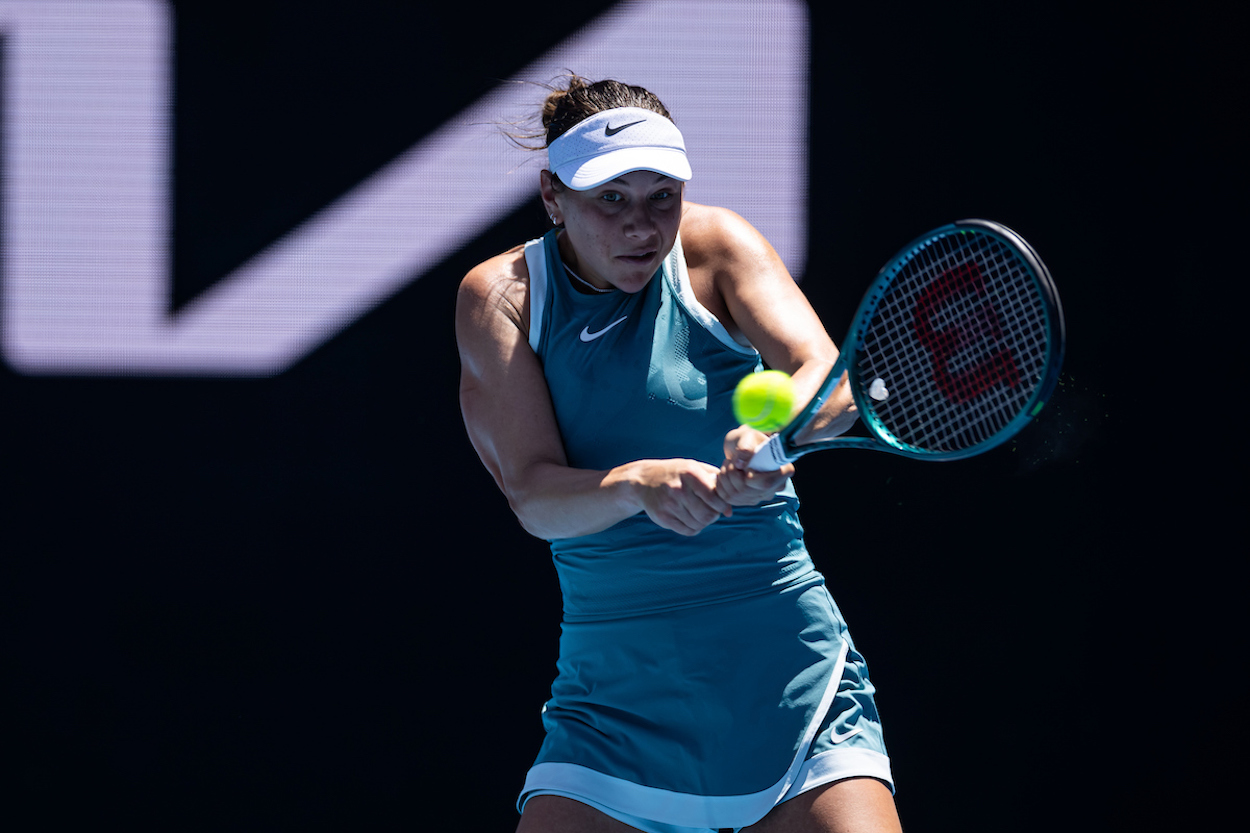
Tennis Analysis: Anisimova’s Resurgence & Ostapenko’s Rollercoaster
The first WTA 1000 event of the season delivered some major surprises, including an unexpected final featuring two unseeded players. However, the standout performers of the week were anything but accidental.
Amanda Anisimova reached a career milestone, securing the biggest title of her career just 10 months after returning from a year-long break to prioritize her mental health. The Qatar Open showcased Anisimova’s full potential, as she played consistently strong tennis throughout the week and delivered her best performance in the final.
The other finalist in Doha, Jelena Ostapenko, also had a breakthrough week. In fact, she displayed the most impressive level of tennis in the tournament – at least until the final.

The Latvian is well known for her aggressive, uncompromising style of play. Historically, her game has been unpredictable – capable of producing electrifying runs filled with winners and bold shot-making but also plagued by serving struggles and erratic unforced errors. The latter had been more prevalent last season, causing her ranking to slip to No. 37.
However, the version of Ostapenko that appeared in Doha was extraordinary. She won five consecutive matches in straight sets, including three upsets over higher-rated opponents. The highlight of her run was a dominant semifinal victory over Iga Świątek, crushing the three-time defending champion 6-2, 6-1 and denying the Pole her chances for a fourth consecutive title in Qatar.
The statistics behind Ostapenko’s success were staggering. Heading into the final, she had won an almost unreal 63% of her return games – well above the best return-game average on hard courts during the ranking period (46% by Daria Kasatkina). Even more impressively, it surpasses her own service-game win rate over the past 52 weeks, which is just 59%.

Playing at this level on a consistent basis, Ostapenko could easily be a world No. 1 contender. However, inconsistency has always been her Achilles’ heel, and it resurfaced in the final. In the championship match, Anisimova executed her game plan flawlessly, delivering a composed and well-rounded performance at the perfect moment. In contrast, Ostapenko reverted to her more erratic tendencies – hitting 19 unforced errors in the opening set, winning just 31% of points on her second serve, and committing 10 double faults. That wasn’t nearly enough against Anisimova, who handled the pressure superbly.
The new champion from Doha could rely on her serve very well. Her averages from all the 6 matches in Qatar meet the best records from the whole WTA field.

Looking ahead, Anisimova will undoubtedly be a player to watch in the coming months. If she continues her upward trajectory, she could soon become a serious contender for the sport’s biggest titles – especially given her past success on multiple surfaces, including a 2019 Roland Garros semifinal and a 2022 Wimbledon quarterfinal.
Data supplied by TennisRatio.com, helping to visualize the performance statistics of the best ATP/WTA tennis players. Their analysis focusses on who performs best on serve and return, who dominates their opponents and who’s game most efficiently translates into results.
![]() Join >> Receive $700/£600 of tennis gear from the Tennishead CLUB
Join >> Receive $700/£600 of tennis gear from the Tennishead CLUB
![]() Social >> Facebook, Twitter & YouTube
Social >> Facebook, Twitter & YouTube
![]() Read >> World’s best tennis magazine
Read >> World’s best tennis magazine
![]() Shop >> Lowest price tennis gear from our trusted partner
Shop >> Lowest price tennis gear from our trusted partner



